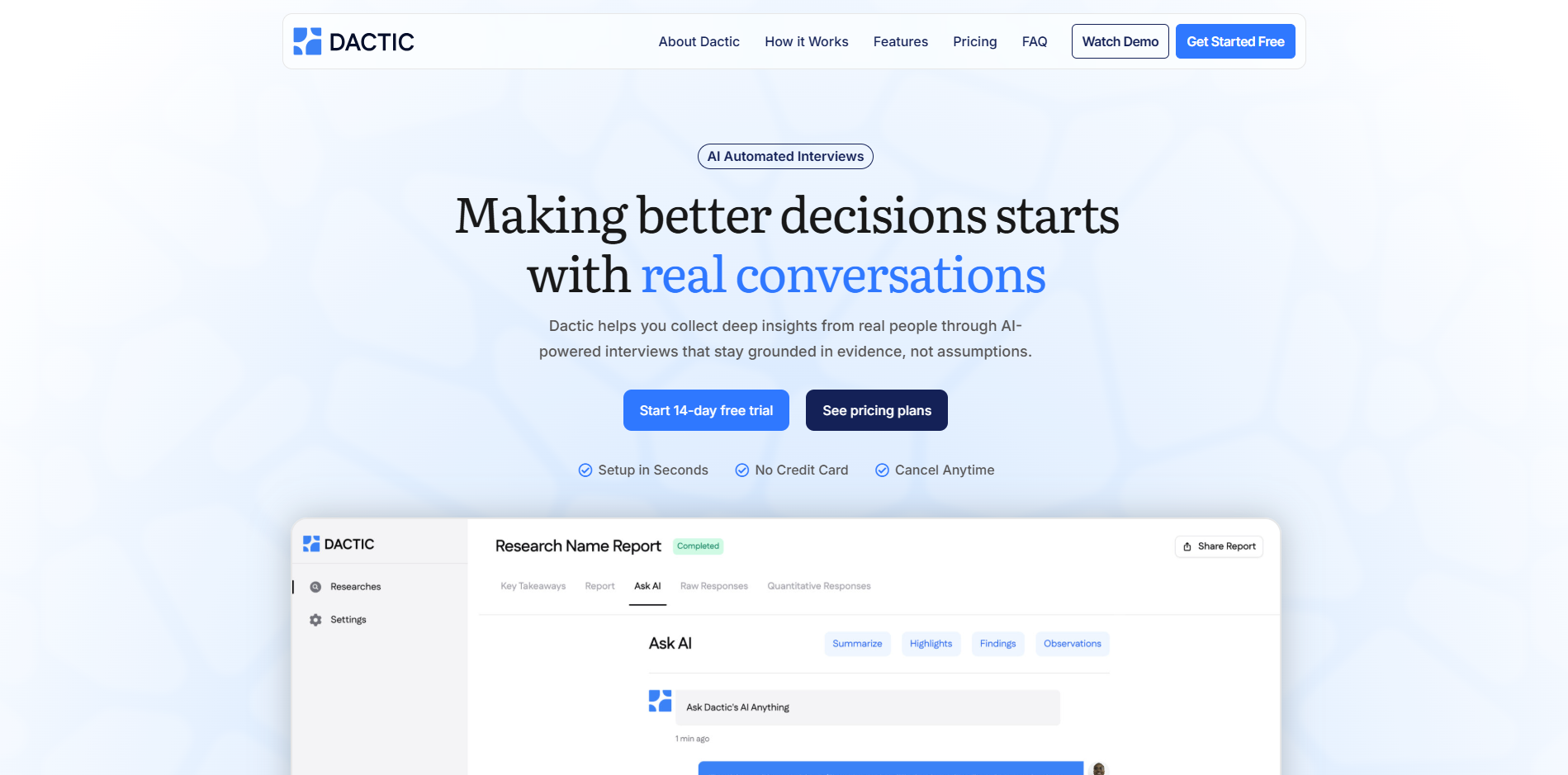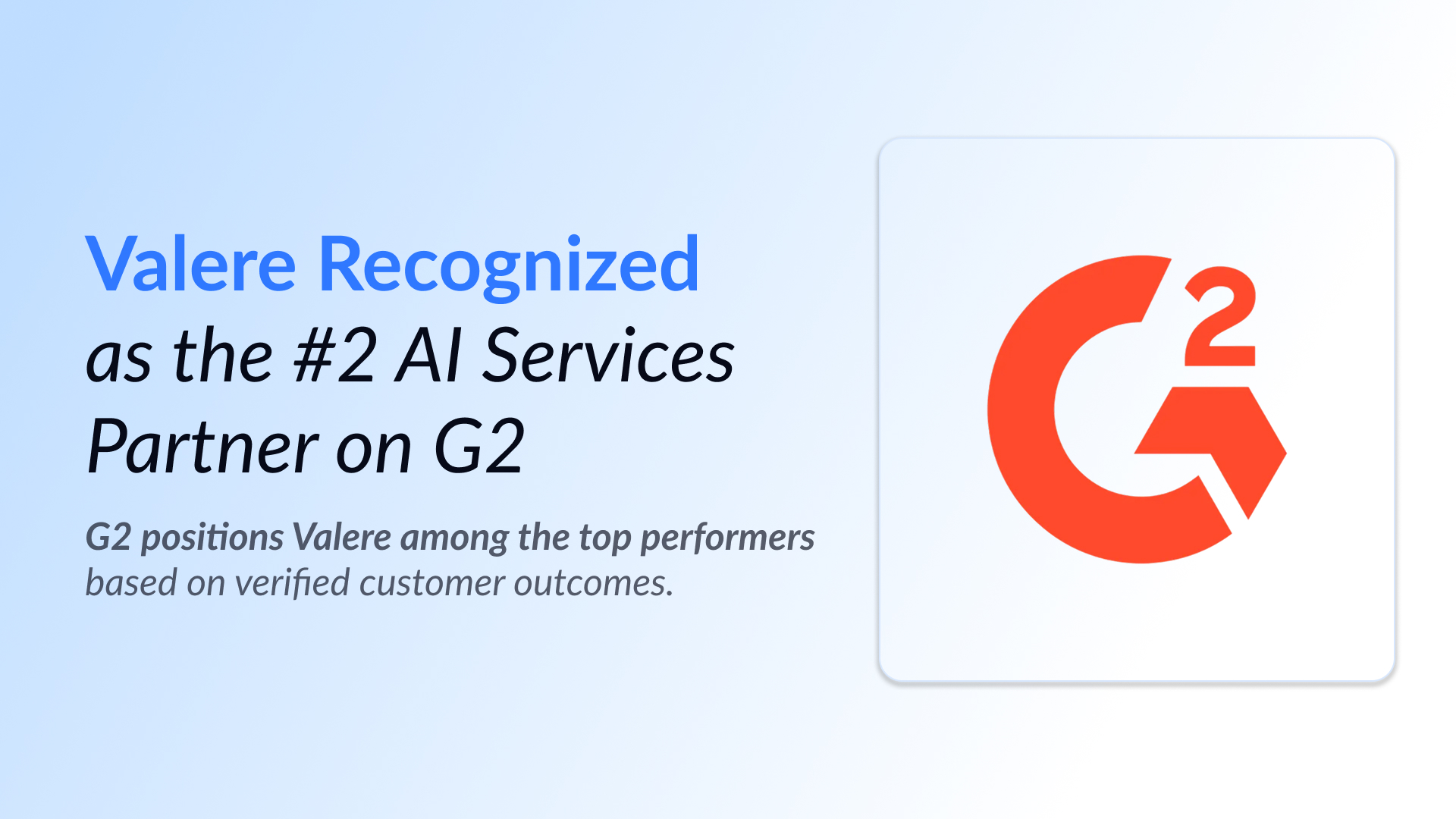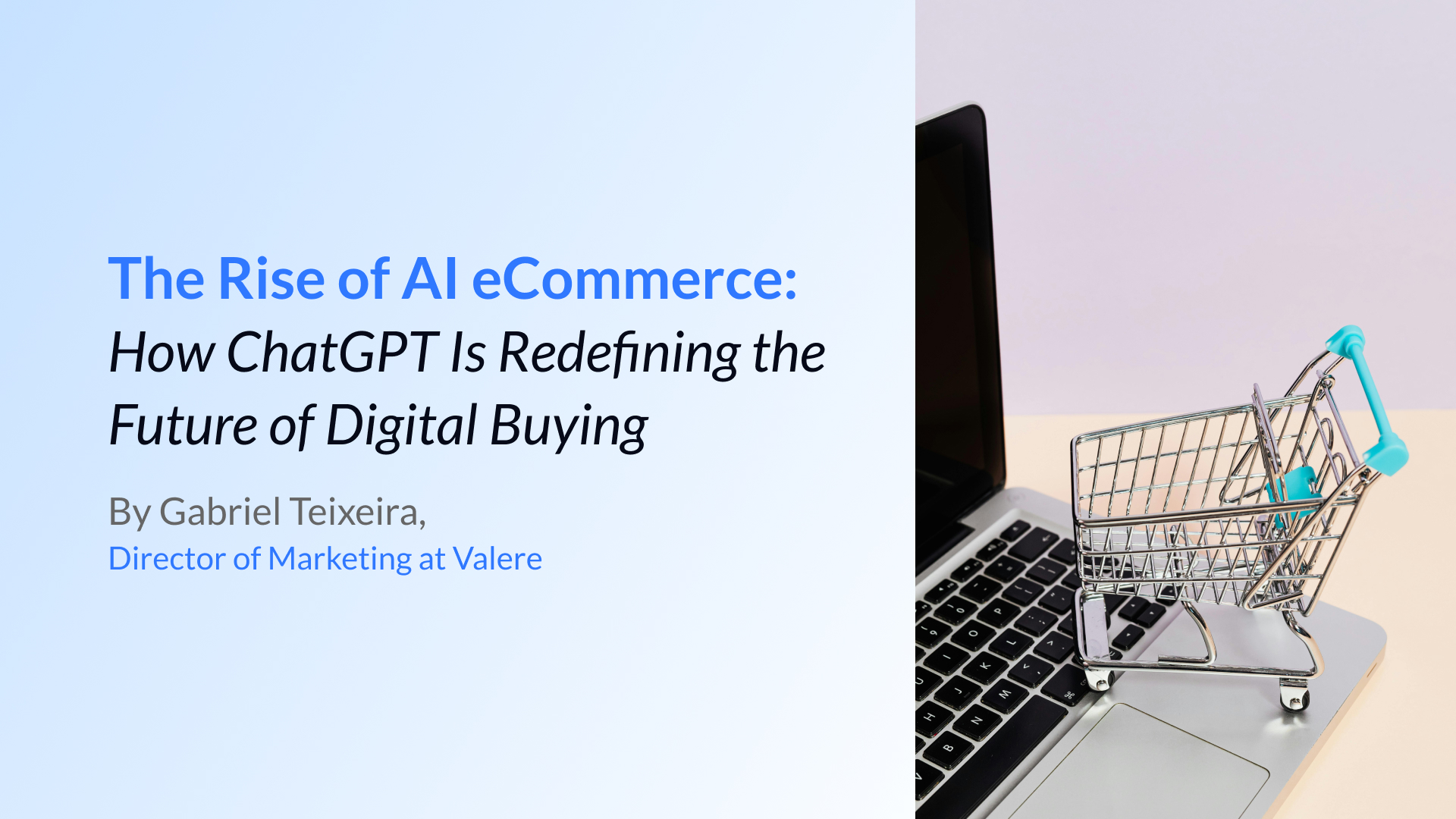By Alex Turgeon, President, Valere
While the MIT Media Lab researchers focused on documenting AI implementation failures, we wanted to understand the success stories. There’s a small group of companies that are actually making this work. They’re scaling AI solutions, seeing real ROI, and building competitive advantages that keep compounding. So what’s different about them? We looked back at our past experience and successful implementations to find out.
What We Learned from Past AI Implementations
At Valere, we’ve worked with organizations across industries to implement AI solutions. Through detailed interviews, surveys, and analysis of over 70 AI-Native solution builds and implementations, we identified four patterns that separate successful AI adoption from expensive experiments.
Most Industries Are Still Experimenting: Only technology and media companies are seeing meaningful structural change from AI. Other sectors—healthcare, finance, manufacturing—are running pilots but haven’t fundamentally changed how they operate. The difference isn’t about having better technology or bigger budgets. It’s about execution.
Big Companies Excel at Pilots, Struggle with Scale: Large enterprises have the resources to run multiple AI experiments simultaneously. But they often lack the organizational agility to scale successful pilots across the business. Meanwhile, smaller companies are moving faster and seeing better results.
Investment Goes to the Wrong Places: Most AI budgets flow toward sales and marketing because the impact is easy to measure and executives can take credit for revenue growth. But the biggest returns often come from back-office operations—places where AI can eliminate entire cost centers rather than just optimize existing processes.
External Partnerships Outperform Internal Builds: Companies working with specialized AI vendors see twice the success rate of internal development projects. This isn’t about technical capability—it’s about focus, speed, and specialized expertise.
The Three Ways AI Projects Usually Fail
After analyzing dozens of failed implementations, three patterns emerge consistently:
Integration Problems
Employees love using ChatGPT because it fits naturally into how they think and work. Then companies deploy enterprise AI tools that require multiple approvals and complex workflows just to generate a simple report.
When AI tools don’t integrate smoothly with existing processes, they become expensive digital paperweights. Real integration means designing around human behavior, not forcing people to adapt to clunky systems.
The Build vs. Buy Trap
There’s something appealing about building AI capabilities in-house. You control everything, customize everything, and own the entire solution. But internal AI projects have a 50% higher failure rate than vendor partnerships.
The reason isn’t lack of talent. AI transformation requires expertise across strategy, technology implementation, change management, and industry knowledge. Most organizations excel in one or two areas, but rarely all four.
Scattered Focus
Companies often launch multiple AI initiatives simultaneously—one for customer service, another for document processing, a third for sales forecasting. Each has different objectives, metrics, and stakeholders.
The result? Mediocre outcomes across every project and stakeholders who conclude that “AI just doesn’t work here.”
What the MIT Researchers Actually Recommend
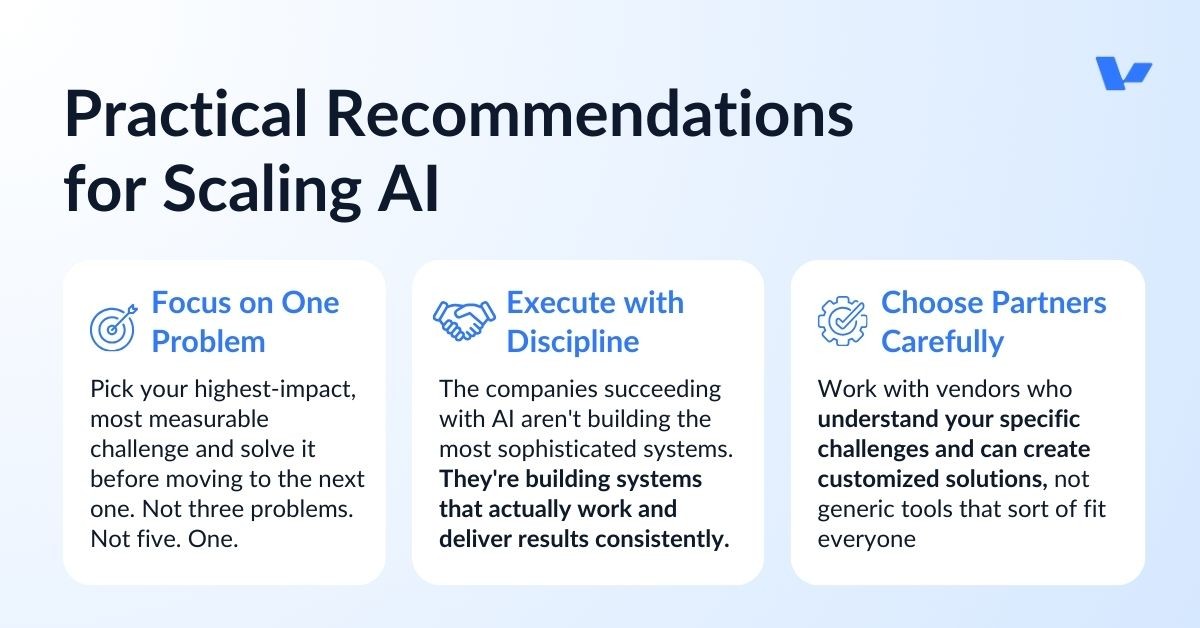
The lead researcher behind the MIT study cut through all the complexity with three straightforward recommendations:
Focus on One Problem: Pick your highest-impact, most measurable challenge and solve it completely before moving to the next one. Not three problems. Not five. One.
Execute with Discipline: The companies succeeding with AI aren’t building the most sophisticated systems. They’re building systems that actually work and deliver results consistently.
Choose Partners Carefully: Work with vendors who understand your specific challenges and can create customized solutions, not generic tools that sort of fit everyone.
This advice sounds simple, but it’s exactly what 95% of companies avoid doing.
How Successful Companies Approach AI Differently
The organizations that scale AI successfully share several characteristics that have little to do with technical budgets or data science teams.
They Start with Business Outcomes
Successful companies ask different questions from the beginning:
- What specific business result are we trying to achieve?
- How will we measure success?
- Who’s accountable for this outcome?
- What’s the cost of doing nothing?
Companies that struggle start with technology questions:
- What can this AI model do?
- How does it compare to what competitors are using?
- What’s the latest breakthrough we should try?
The difference is fundamental. Winners connect AI capabilities to business results from day one. The others hope business results will somehow emerge from cool technology.
They Focus on Adoption, Not Just Deployment
Getting a system to work technically is deployment. Getting people to use it consistently to achieve better results is adoption. Most AI projects celebrate when systems go live, not when users actually integrate them into their daily work.
Successful companies spend as much time on change management as technology development. They identify power users early, create feedback loops, and continuously iterate based on how people actually use the system.
They Expect Learning, Not Perfection
Traditional software either works or it doesn’t. AI systems improve over time through feedback and iteration. Companies that succeed build measurement frameworks that track system learning alongside business metrics.
They expect initial performance to be good enough to start generating value, not perfect from day one. Companies that fail often abandon projects when early results don’t meet unrealistic expectations.
They Think in Systems
Point solutions create isolated improvements. Successful companies approach AI as an organizational capability that connects multiple functions and processes.
They map how different parts of their business interact, identify systemic bottlenecks, and design AI solutions that address root causes rather than symptoms.
Our Approach to Scaling AI Successfully
Our methodology differs from typical AI implementations because we focus on the organizational factors that determine success or failure.
Strategy Before Solutions
We start every engagement by understanding your competitive position, operational challenges, and success metrics. Instead of asking “What AI tools do you need?” we ask “What business outcomes would create the biggest impact?”
This foundation ensures that every AI investment connects directly to measurable results and supports broader business objectives.
Organizational Readiness Assessment
Technology implementations fail when organizations aren’t prepared for change. We assess current capabilities, identify gaps, and develop change management strategies before any technology deployment.
Our evaluation covers current AI knowledge across the organization, existing workflow patterns and bottlenecks, cultural readiness for AI-enhanced processes, and leadership commitment to supporting change.
Building for Continuous Improvement
We design AI systems that get better over time through structured feedback and learning processes. Our implementations include monitoring systems, performance analytics, and improvement protocols that ensure your investment becomes more valuable with use.
The Complete AI Assessment Process
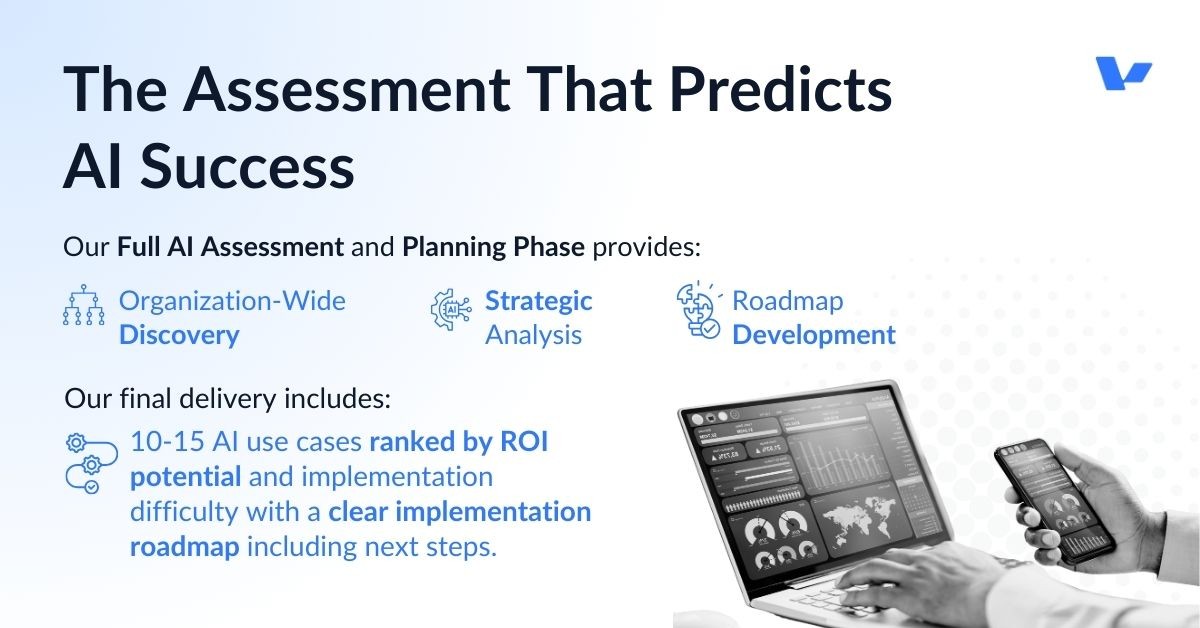
Our comprehensive evaluation gives organizations the clarity and confidence needed to scale AI successfully.
Organization-Wide Discovery
We begin with structured interviews across your entire organization to understand current state and identify opportunities. This captures who’s using what tools and how effectively, existing workflows and operational friction points, potential use cases and pain points from every department, and AI knowledge levels and learning needs throughout the organization.
Strategic Analysis
We conduct focused interviews with key stakeholders to dive deeper into the most promising opportunities and ensure alignment with business strategy.
These conversations explore high-potential use cases that warrant further investigation, workflow analysis and technology readiness, connections between AI opportunities and business objectives, and feasibility assessment including organizational change requirements.
Roadmap Development
We synthesize findings into a prioritized action plan that connects AI capabilities to business outcomes.
The final deliverable includes a prioritized matrix of 10-15 AI use cases ranked by ROI potential and implementation difficulty, detailed technical specifications for selected opportunities, employee development paths for building organizational AI capabilities, and a clear implementation roadmap with next steps.
Moving Beyond Pilot Purgatory
Companies stuck running endless pilots share common patterns. They treat AI like a research project instead of a business transformation. They optimize for technical demonstrations instead of operational impact. They measure system deployments instead of user adoption.
The companies that succeed take a different approach. They start with clear business objectives, design for human adoption, build systems that learn and improve, and partner with specialists who understand both technology and organizational change.
Most importantly, they commit to sustained execution rather than sporadic experimentation.
The Closing Window
The MIT research identified something important: enterprises are making vendor decisions over the next 12-18 months that will shape their AI capabilities for years to come. Companies that build effective AI capabilities during this period will establish sustainable competitive advantages. Those that don’t will spend years trying to catch up.
The opportunity is significant, but the window for establishing these advantages is narrowing.
What This Means for Your Organization
The divide in AI success isn’t between companies that have AI and those that don’t. It’s between organizations that approach AI strategically versus tactically.
Strategic organizations start with business outcomes and work backward to technology solutions. They invest in developing people alongside deploying tools. They design for continuous learning and adaptation.
Tactical organizations start with impressive demos and hope they solve business problems. They focus on feature comparisons and deployment schedules. They measure success by system uptime rather than business impact.
The MIT data shows where tactical approaches lead: high costs, low impact, and disappointed stakeholders.
At Valere, we help organizations join the small group that actually generates ROI from AI investments. We ensure your AI transformation creates competitive advantages rather than just additional costs.
In a business environment where 95% of AI initiatives fail to deliver measurable results, being in the successful 5% isn’t just advantageous—it’s essential for staying competitive.
Interested in starting your approach strategically? Our AI Maturity Assessment shows where your company stands today and what to prioritize next.
What you’ll get in minutes:
– Your AI maturity score (0–5).
– Tailored recommendations for immediate impact.
– A concise assessment you can bring to the next meeting.
Ready to unlock the full potential of AI Agents in your enterprise in 2025? Contact us to learn more about how Valere can propel you on your AI journey.

